Related Research Articles
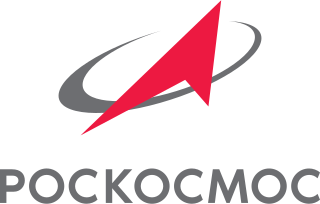
The Roscosmos State Corporation for Space Activities, commonly known as Roscosmos, is a state corporation of the Russian Federation responsible for space flights, cosmonautics programs, and aerospace research.

Animals in space originally served to test the survivability of spaceflight, before human spaceflights were attempted. Later, other non-human animals were flown to investigate various biological processes and the effects microgravity and space flight might have on them. Bioastronautics is an area of bioengineering research which spans the study and support of life in space. To date, seven national space programs have flown animals into space: the Soviet Union, United States, France, Argentina, China, Japan and Iran.
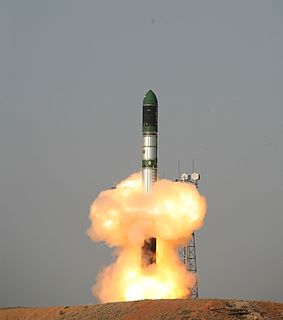
The Dnepr rocket was a space launch vehicle named after the Dnieper River. It was a converted ICBM used for launching artificial satellites into orbit, operated by launch service provider ISC Kosmotras. The first launch, on April 21, 1999, successfully placed UoSAT-12, a 350 kg demonstration mini-satellite, into a 650 km circular Low Earth orbit.

The Soyuz-U launch vehicle was an improved version of the original Soyuz rocket. Soyuz-U was part of the R-7 family of rockets based on the R-7 Semyorka missile. Members of this rocket family were designed by the TsSKB design bureau and constructed at the Progress factory in Samara, Russia. The first Soyuz-U flight took place on 18 May 1973, carrying as its payload Kosmos 559, a Zenit military surveillance satellite. The final flight of a Soyuz-U rocket took place on 22 February 2017, carrying Progress MS-05 to the International Space Station.

Foton is the project name of two series of Russian science satellite and reentry vehicle programs. Although unmanned, the design was adapted from the manned Vostok spacecraft capsule. The primary focus of the Foton project is materials science research, but some missions have also carried experiments for other fields of research including biology. The original Foton series included 12 launches from the Plesetsk Cosmodrome from 1985 to 1999. The second series, under the name Foton-M, incorporates many design improvements over the original Foton, and is still in use. So far, there have been four launch attempts of the Foton-M. The first was in 2002 from the Plesetsk Cosmodrome, which ended in failure due to a problem in the launch vehicle. The last three were from the Baikonur Cosmodrome, in 2005, 2007, and 2014; all were successful. Both the Foton and Foton-M series used Soyuz-U rockets as launch vehicles. Starting with the Foton-7 mission, the European Space Agency has been a partner in the Foton program.

The Bion satellites, also named Biocosmos, is a series of Soviet biosatellites focused on space medicine. They are part of the Kosmos satellites.

Soyuz-2 is a modernized version of the Soviet Soyuz rocket. In its basic form, it is a three-stage launch vehicle for placing payloads into low Earth orbit. Compared to the previous versions of the Soyuz, the first-stage boosters and two core stages feature uprated engines with improved injection systems. Digital flight control and telemetry systems allow the rocket to be launched from a fixed launch platform, whereas the launch platforms for earlier Soyuz rockets had to be rotated as the rocket could not perform a roll to change its heading in flight.

The Young Engineers' Satellite 2 (YES2) is a 36 kg student-built tether satellite that is part of ESA's Foton-M3 microgravity mission. The launch of the Russian Foton-M3 occurred on September 14, 2007 at 13:00 (CEST) by a Soyuz-U launcher. The project was carried out by Delta-Utec SRC and supervised by the ESA Education Office and was nearly entirely designed and build by students and young engineers.

In 2015, the maiden spaceflights of the Chinese Long March 6 and Long March 11 launch vehicles took place.

Progress M-12M, identified by NASA as Progress 44P, was an uncrewed Progress spacecraft that was lost in a launch failure on 24 August 2011, at the start of a mission to resupply the International Space Station. It was the twelfth modernised Progress-M spacecraft to be launched. Manufactured by RKK Energia, the spacecraft was to have been operated by the Russian Federal Space Agency.

This article documents notable spaceflight events during the year 2019.
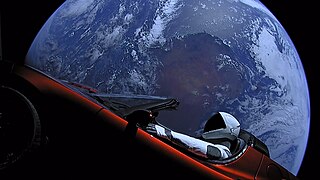
This article lists achieved spaceflight events in 2018. For the first time since 1990, more than 100 orbital launches were performed globally.
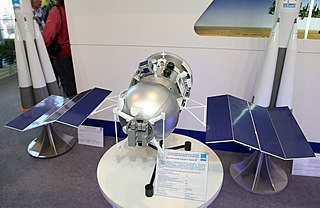
Bion-M No.1 (Бион-М) is a Russian space mission, part of the Bion programme focused on space medicine. The new generation Bion-M continues the Soviet/Russian satellite programme aimed at biological research in space. The most recent spacecraft of the series, Bion 11, was launched in 1996. The Bion-M1 spacecraft is designed to carry biological, physiological and biotechnological experiments to low Earth orbit and return them to Earth at the end of the mission. The biological payload for Bion-M1 includes rodents, amphibians, reptiles, crustaceans, mollusks, fish, insects, bacteria, plant and animal cell cultures. The spacecraft is the result of collaboration hosting biomedical payloads provided by scientific institutions from the United States, Germany, Canada, the Netherlands, Poland and other countries. The Bion-M automated spacecraft is a unique specialized space complex that will help determine the fundamental mechanisms of how life adapts to microgravity and then readapts to Earth-normal gravity.

Progress M-19M, identified by NASA as Progress 51P, is a Progress spacecraft used by Roskosmos to resupply the International Space Station during 2013. Progress M-19M was launched on a standard 2-day rendezvous profile towards the ISS. The 19th Progress-M 11F615A60 spacecraft to be launched, it had the serial number 419 and was built by RKK Energia.

Progress M-25M, identified by NASA as Progress 57P, is a Progress spacecraft used by Roskosmos to resupply the International Space Station (ISS) during 2014. Progress M-25M was launched on a six-hours rendezvous profile towards the ISS. The 25th Progress-M 11F615A60 spacecraft to be launched, it had the serial number 425 and was built by RKK Energia.
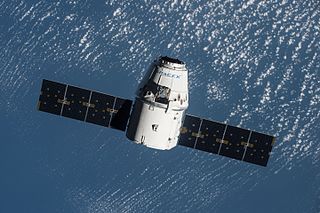
SpaceX CRS-9, also known as SpX-9, is a Commercial Resupply Service mission to the International Space Station which launched on 18 July 2016. The mission was contracted by NASA and is operated by SpaceX using a Dragon capsule.

Progress MS-01, identified by NASA as Progress 62P is a Progress spacecraft used by Roscosmos to resupply the International Space Station (ISS) during 2015. It was launched on 21 December 2015, to deliver cargo to the ISS. Progress MS-01 is the first vehicle in the Progress-MS series.

Progress MS-03, identified by NASA as Progress 64P, is a Progress spacecraft to be used by Roscosmos to resupply the International Space Station (ISS). It is the first Progress MS to have an external compartment for releasing satellites.
Progress MS-18, Russian production No. 447, identified by NASA as Progress 79P, is a Progress spacecraft launched by Roscosmos to resupply the International Space Station (ISS). This is the 170th flight of a Progress spacecraft.
Progress MS-19, Russian production No.449, identified by NASA as Progress 80P, is a Progress spacecraft launched by Roscosmos to resupply the International Space Station (ISS). This will be the 172nd flight of a Progress spacecraft.
References
- 1 2 3 4 5 Peat, Chris (1 September 2014). "FOTON M4 - Orbit". Heavens-Above. Retrieved 15 November 2014.
- ↑ "Launch Calendar: The Year's Space Mission Schedule" . Retrieved 2 September 2014.
- 1 2 Krebs, Gunter. "Foton-M 4, 5 (34KSM)". Gunter's Space Page. Retrieved 25 July 2014.
- ↑ Graham, William (18 July 2014). "Soyuz 2-1A launches Foton-M with a crew of creatures". NASASpaceflight.com. Retrieved 25 July 2014.
- ↑ Zaks, Anatoly (2 August 2014). "Roskosmos restores control over Foton-M4". RussianSpaceWeb.com. Retrieved 14 August 2014.
- 1 2 "Russian Foton-M #4 Research Spacecraft successfully returns to Earth". Spaceflight101. 1 September 2014. Archived from the original on 26 July 2014. Retrieved 2 September 2014.
- 1 2 Clark, Stephen (24 July 2014). "Officials unable to contact animal-carrying spaceship". Spaceflight Now. Retrieved 25 July 2014.
- 1 2 "Russian Gecko sex satellite lost in space". news.biharprabha.com. IANS. 25 July 2014. Retrieved 27 July 2014.
- ↑ Kramer, Miriam (2 September 2014). "Russia's Space Sex Geckos Found Dead After Landing" . Retrieved 19 February 2015.